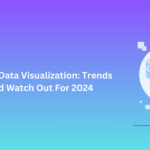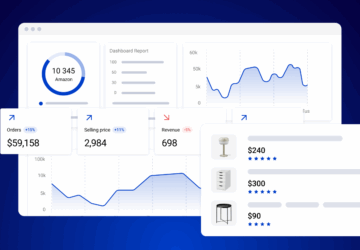When we think of evil, we usually think of malevolent political actors, figures from history or fiction, and anyone who abuses power or causes deliberate harm to others. While it’s very human to think of moral evils first, especially in an era of algorithms flooding our phone and computer screens with highly clickable controversies, we forget all too often about natural evils. We see them as facts of life, insurmountable and inscrutable characteristics of our experience of life that we would simply do better not to think about. Truth be told, high-mortality diseases, especially those that can strike early in life, are arguably the greatest net evils in our world today. And with any luck, the next century might see many of them well-ailed or even cured completely.
If we do live to see a day when conditions leading to natural deaths like heart disease, cancer, strokes, Alzheimer’s, and kidney or liver disease are a worry of the past, it will most likely be thanks to artificial intelligence. The daily headlines we see about AI are usually populated by stark contrasts consisting of bright predictions for the stock market value of Fortune 500 tech companies, and fear-mongering about the potential for the kind of runaway scenario we’ve seen in media like Black Mirror, Terminator, and The Matrix. But the real news – the news we should be hearing – is in the hard sciences, and practical applications like medicine.
Cardiovascular Diseases
Ranking in at number 1 and 3 on the list of the leading causes of death globally, heart diseases, also known as CVDs, are truly a blight on mankind. This tragedy touches us all at some point: nearly everyone knows someone who has suffered from or been killed by heart disease. Fortunately, there is hope.
A recent hospital trial in Taiwan demonstrated that an AI trained to predict the risk of death in patients with different CVDs could potentially save the lives of up to patients hospitalized for an acute episode. The AI was trained on over 450,000 electrocardiogram scans from a combination of healthy patients and patients with risk factors for or documented episodes of CVDs. When used in a hospital environment, it was able to accurately predict the patients most at risk of an imminent episode, allowing nurses and doctors to more effectively triage patients and prevent 90% of potential fatalities: the rate of death in the control sample was 2.4%, as compared to .2% for the experimental sample using the AI.
A recent literature review, published in OxJournal, reviewed recent research related to the ability of AI to reduce fatalities in patients with coronary artery disease (CAD). The review encompassed a wide range of recent studies and experiments conducted to improve risk stratification (the determination of how severe a patient’s condition is or how likely they are to have a certain condition), diagnosis, and surgical processes that make use of AI.
The paper concluded that the advancements related to AI, including processes devised with the help of AI and techniques that use AI directly, represent a significant advancement over the status quo. In particular, it highlighted that the use of AI in diagnosing CAD using echocardiograms and electrocardiographs has both reduced the time needed to produce an accurate diagnosis and has helped doctors diagnose CAD and associated conditions more accurately. Also of note were cutting-edge AI-assisted surgical processes, which, while not currently in mainstream use, have demonstrated the potential to reduce surgical mortality and improve recovery times in patients undergoing cardiovascular surgery for the treatment of CAD.
Stroke
As the number 2 cause of death globally, strokes are every bit as serious as a heart attack and can be every bit as tragic. Strokes are nearly as common in people under 50 as heart attacks, and can be even more difficult to predict. While the risk factors for early stroke mirror those of heart attacks (diabetes, high blood pressure, high cholesterol, smoking, heart conditions), the fact that they take place in the brain can make risk factors more difficult to assess.
Luckily, AI is helping us make serious headway in this regard, and it doesn’t even require invasive testing; all it takes is an X-ray. A 2022 study made use of a deep learning model to examine patients for risk factors associated with strokes. The deep learning model was trained on over 140,000 chest X-rays from participants in screening trials for a cancer study and was tested on a cohort of over 11,000 outpatients whose X-rays were taken to determine their eligibility for statin therapy to lower their cholesterol.
Statin therapy can have serious side effects, so it is normally only prescribed for patients deemed to be facing serious risk: a 7.5% or higher risk of stroke in the following 10 years is the standard for prescribing statins. The AI model predicted the likelihood of stroke or heart attack at a comparable rate compared to traditional methods, using significantly less data. This could mean great things for reducing the time and costs associated with receiving a prescription that might be truly life-saving for those at risk of stroke.
Another paper, a 2023 literature review, assessed the results of 16 studies that used different AI algorithms to predict the outcome of ischemic strokes. The studies used a wide variety of different patient data, depending on the type of AI being used to make a prediction. Overall, nearly all AI methods resulted in high predictive values, but the best models used were support vector machines, a variety of AI models that are specially designed to classify inputs according to different predetermined criteria.
Cancer
Cancer may not affect the same number of people as heart disease or strokes, but a long, drawn-out bout with cancer can potentially produce more prolonged and intense suffering than episodic conditions like strokes or heart attacks. Anyone who has had a loved one suffer a long battle with cancer can attest to the devastating emotional and financial impact it can have not only on the person suffering but on those around them, too.
But AI is yet again showing promising results in both the detection and treatment of cancer.
A team at Mass General, one of the premier research hospitals in the world, has been working with MIT on a tool called Sybil. Sybil is an artificial intelligence model trained on low-dose chest computed tomography scans, a test frequently recommended for people between the ages of 50 and 80 who have a history of smoking to determine their likelihood of developing lung cancer. As the most fatal variety of cancer amongst Americans, diagnosing and treating lung cancer is seen as a major priority in the field. Since undergoing training, Sybil has been able to examine these scans and accurately predict the likelihood of the patient developing some variety of lung cancer within 6 years of the scan.
Another recent study revealed the usefulness of diagnosing brain cancer. An AI algorithm used in surgery aimed at diagnosing brain cancer was able to diagnose brain cancer correctly 94.6% of the time, compared to the conventional pathology-based approaches at 93.9%. This could result in reduced times for diagnosis and reduced workloads on the labs that perform the traditional tests used to diagnose brain cancer.
Artificial intelligence shows so much promise in the field of medicine as it will undoubtedly assist all healthcare professionals from doctors to online PhD in Nursing graduates. Early diagnosis is crucial to the successful treatment of diseases with high rates of mortality, and AI has proven itself useful over and over again in these tasks. While we may not want to hand over the reins completely just yet, there can be no doubt that AI will continue to find new uses for itself in saving lives in the years to come.








